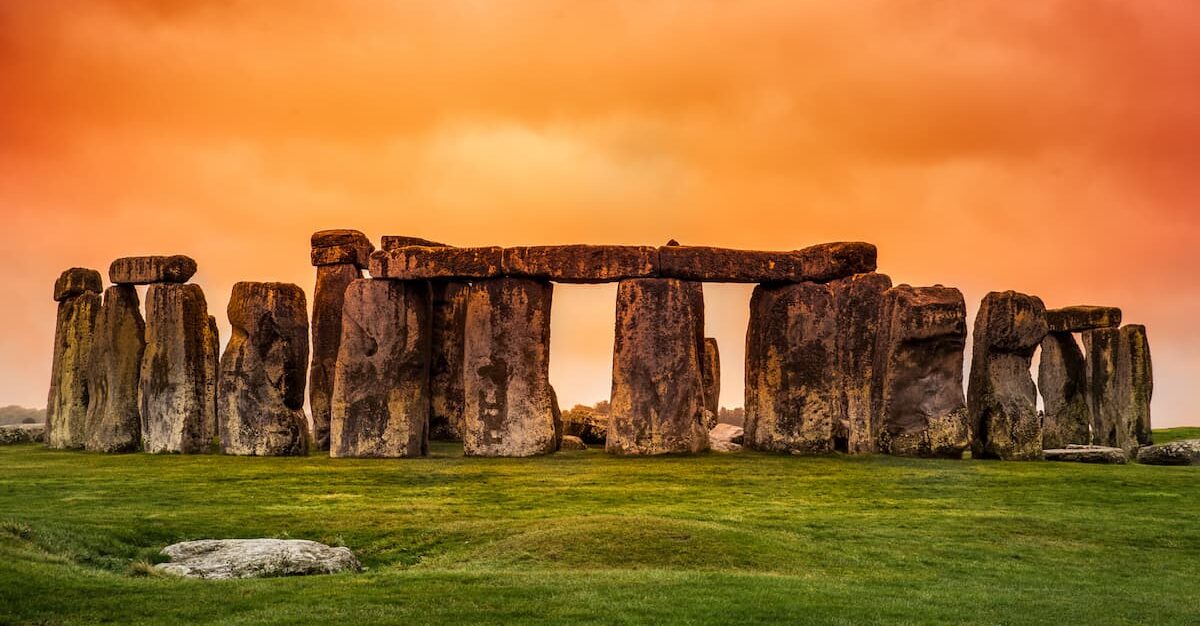
Go World Travel is reader-supported and may earn a commission from purchases made through links in this piece.
A visit to London, England, is always filled with history, art and culture. Equally delightful are the numerous day trips that a visitor can embark on from London, with palaces, castles, gardens, scenic wonders and more, all merely a short train or bus ride away.
On one such day trip from London, I too came away with memories that will last me a lifetime.
My husband and I boarded a tour bus from Central London one cold December morning, ready to spend a history-soaked day in Stonehenge. The bus quickly filled up with eager tourists and after a short introductory speech by the tour guide, off we went.
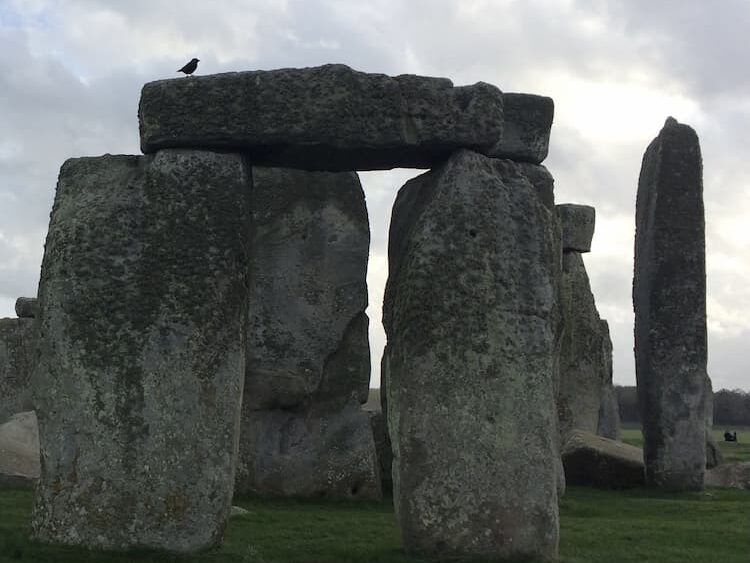
A Visit to Stonehenge
Stonehenge, a UNESCO World Heritage Site, lies in Salisbury Plain in Wiltshire County in England and is one of the most popular day trip destinations from London. After about a two-hour drive, as the bus approached the hallowed site, I got the first distant glimpse of the timeless megaliths.
The tour started at the sleek visitors center where after getting our tickets, we entered a museum of exhibits. The Stonehenge Exhibition displays artifacts such as jewelry, pottery, and tools discovered at the site.
But most people, including us, crowded around to see the reconstruction of a 5000-year-old human face assembled from bones found at the site.
Outside, the reconstructed Neolithic dwellings were another attraction. The huts recreate the prehistoric homes found at Durrington Walls, about a mile away from Stonehenge.
Inside, the space was laid out with seats, a sleeping area, a fireplace and household items, bringing to life the everyday activities of people who lived here around 2500 BC.
Find skip-the-line tickets to the Stonehenge site here.
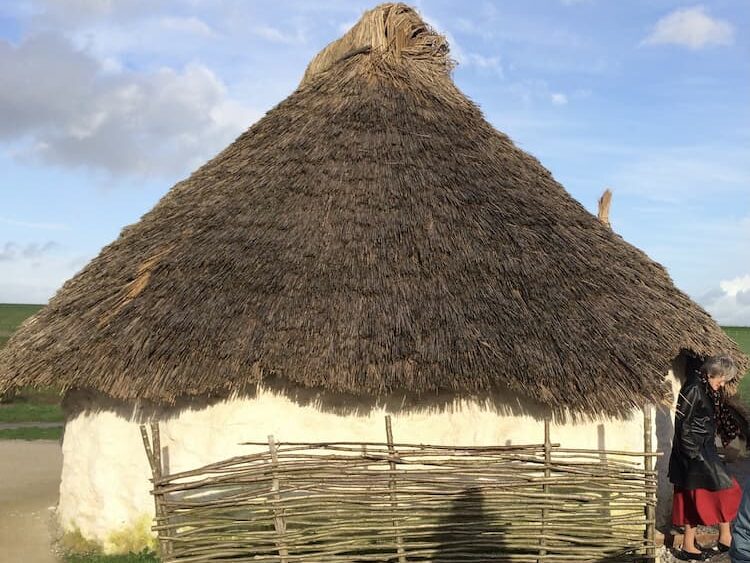
The Mystery and History of Stonehenge
No one really knows why Stonehenge was built, but theories abound. Some say it was a religious site while others speculate it was used as a calendar. According to scientists, it was probably an astronomical observatory.
There is one certainty that prevails amidst the mystery – Stonehenge was built in three phases, starting in the fourth millennium BC much before the construction of the Pyramids of Egypt.
And when the final phase was completed, the Neolithic Age had given way to the Bronze Age, and a total of about 4500 years had passed by.
Around 3100 BCE, a mammoth circular ditch, about six feet deep, was dug here with a 360-foot wide bank, heralding the First Phase. This megastructure, known as a henge, had a large entrance on the northeast with a smaller entry point to the south.
Inside the henge, 56 pits were found, each three feet in diameter. They were subsequently called Aubrey Holes after the 17th-century archeologist John Aubrey who discovered them.
Were the pits filled with upright wooden beams or upright bluestones? No one knows; except that it would be a feat if it were bluestones, as they weigh 2 to 4 tons each and were mined 250 miles away in Wales.
During the Second Phase which commenced about 200 years later, upright wooden posts were erected in the center and near the two entrances to the henge. At this time, the entire structure also functioned as a cremation ground as evidenced by the many human remains found here.
The Third Phase is surely the most spectacular and this is what tourists come to see today.
About 500 years after the second phase, the wooden beams or perhaps the massive bluestones were removed and somehow 30 gigantic sarsen stones, quarried from nearby Marlborough Downs, were placed upright in the henge forming a 108 feet diameter circle.
These stones were then connected by 30 similarly massive lintel stones.
Take a top-rated half-day audio tour around Stonehenge here.
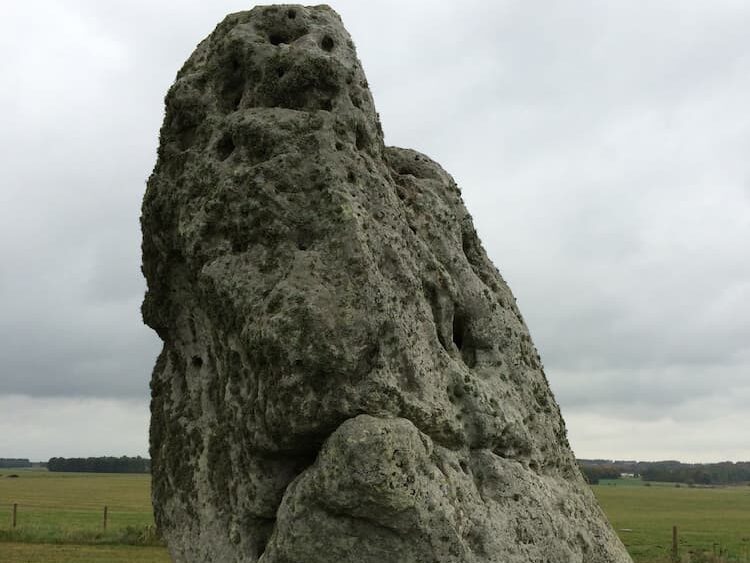
Walking Up to the Unique Stone Circle
Once the visitors center tour is finished, you can take a shuttle to reach Stonehenge, but my husband and I decided to walk.
The path winds through verdant grasslands and I was excited to see herds of sheep grazing the lands and clumps of rooks and crows all along the paths.
The crows were flying, resting on top of the fence along the path, congregating on the ground, adding an air of mystery to the surroundings. The sky was a shiny blue, dotted with clouds, the weather bitterly cold – in fact, it was the perfect kind of weather to visit a sacred ground such as this.
I found out later that the birds use the nooks and crannies in the stones as their nesting ground and I was delighted to see one perched on top of a massive stone creating a picture-perfect scene.
See all you can in a short time on the Stonehenge express tour here.
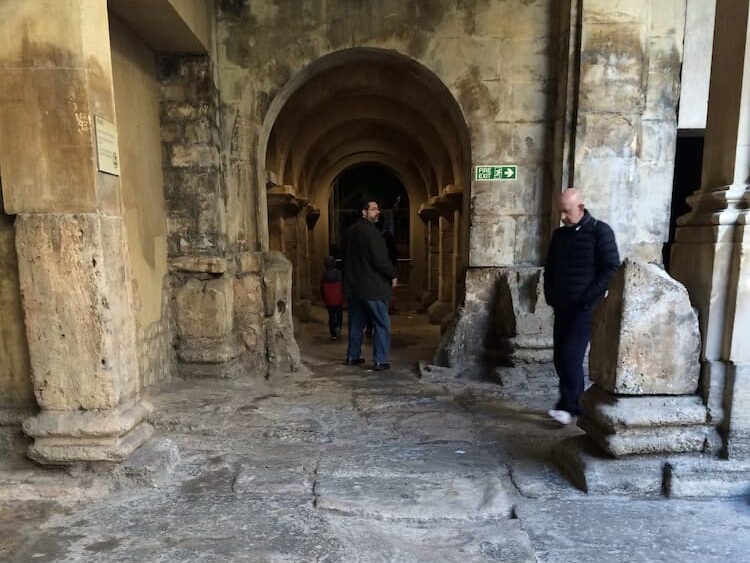
Experiencing Stonehenge
You can’t enter the circle of stones (a specially ticketed Stone Circle Experience can be booked and it takes place outside of general visiting hours), but that was not a problem. I could walk right up to the roped-off hallowed stones and let my imagination flow.
I have to say, though I had seen enough pictures and even videos of Stonehenge earlier, seeing them in person is a sublime experience. Because really, it boggles the mind to think how the entire structure was established.
The audio guide I was listening to told me that the stone circle is an alignment of stones for the movement of the sun.
The idea of Stonehenge’s relationship with the solar and lunar calendar was first considered by scholars in the 18th century because they saw that during the midsummer solstice the sunrise was exactly framed by the end of the horseshoe of stones at the monument’s interior, and the midwinter sunset was framed at exactly the opposite point which was the center of the bend of the horseshoe.
It is truly an engineering feat that makes the sun’s rays flood the inner circle with sunlight on the summer and winter solstice, the longest and shortest days of the year, composing a corridor of sunshine.
Though the stones that emulated a doorway were most fascinating, I was intrigued by the singular upright stones: the smaller bluestones in the inner ring and the behemoth sarsens that resembled giant menhirs but with flat tops.
What was their purpose? Why were they not attached with a lintel stone? I don’t think anyone will ever find out the real answers. Stonehenge will continue to be a mystery.
I know that visiting oft-touristed sites is sometimes looked down upon, Stonehenge after all is inundated by close to a million visitors a year, but there’s no denying that seeing these mighty, man-made stone formations, one of the most famous prehistoric monuments, was exhilarating.
Experience Stonehenge to the fullest on this best-selling full-day tour here.
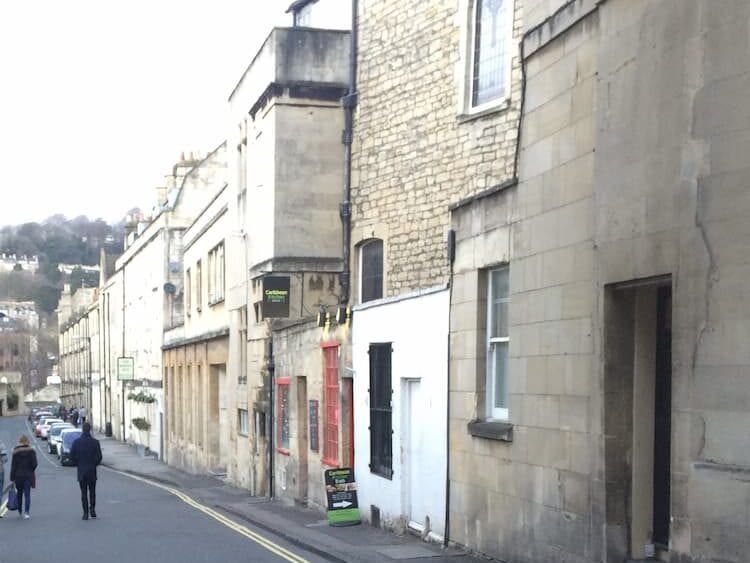
Other Places of Interest near Stonehenge
A visit to Stonehenge can also be combined with other places of interest close by. Only about 20 miles north lies Avebury, a part of the Stonehenge World Heritage Site. Purists often swear by Avebury and pick it as a must-see destination over Stonehenge.
The site is free to visit and less crowded, the 4000-year stone circle, though not all stones are there anymore, is the world’s largest and visitors are allowed to walk amidst the stones.
Also, within the Stonehenge World Heritage Site and about two miles away is Woodhenge, a Neolithic era timber circle.
Do not be confused by what you see today – the grounds are covered with concentric rings of concrete posts which are merely markers for the original timber posts that made six concentric ovals where the long axis pointed to the summer and winter solstices.
The lovely, chalk grasslands at Bratton Camp and White Horse, a 30-minute drive from from Stonehenge, originally held an Iron Age settlement/ Today, it offers spectacular views of Wiltshire countryside.
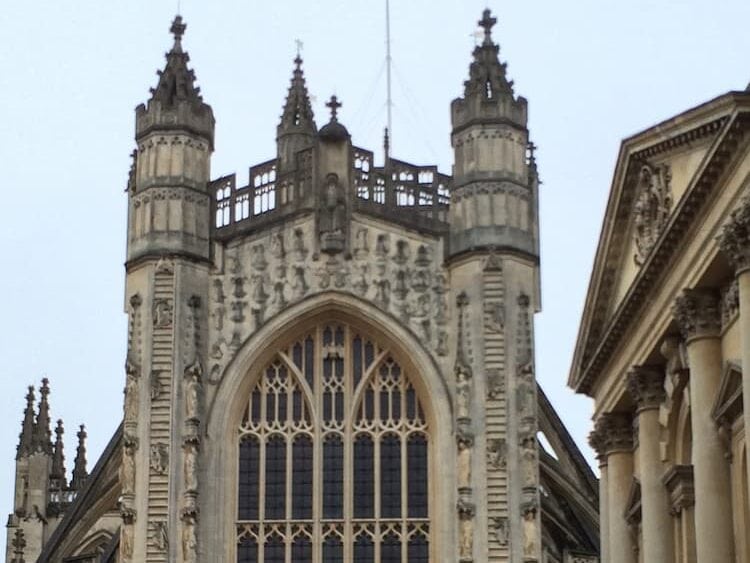
The Cathedral City of Salisbury
A 20-minute drive from Stonehenge will bring you to the famed Salisbury Cathedral in Salisbury. Truly a wondrous beauty of architecture, the cathedral was built within a span of 36 years, starting in 1220, and is a magnificent example of the Early English Gothic style.
A variety of tours are available, both free and ticketed. The cathedral holds one of the four copies of the Magna Carta, the best-preserved one according to the cathedral’s website.
The 1215 document granted by King John holds forth the argument that a king and his government cannot be above the rule of law and is essentially the first written European constitution.
See both the Stonehenge and city of Salisbury on a guided tour here.
Old Sarum in Wiltshire
For those interested in seeing still more Iron Age sites, there’s Old Sarum with a history that encompasses a prehistoric settlement followed by a Roman settlement which then became Salisbury, the most important Middle Ages city.
It shouldn’t be mistaken for the cathedral city of today, which was established in the 13th century with stones taken from buildings and quarried from Old Sarum or Old Salisbury.
Today, you can tour the rubble ramparts of the castle and the remains of the old cathedral and see the Roman roads. All around you will be the fantastic vistas of the Wiltshire landscape.

The Beauty of the Cotswolds
Stonehenge tours that begin in London are sometimes combined with a visit to the Cotswolds. A sprawling 800-acre area that includes exquisite English villages, market towns, castles, gardens, estates and a variety of natural world delights, the Cotswolds can very well be a holiday destination in and of itself.
There is the 102-mile Cotswold Way, winding through rural woodlands and meadows, past medieval era homes, churches and estates, all built of golden, honey-colored limestone. The Cotswolds is designated as an “Area of Outstanding Natural Beauty” and is a protected landscape.
The tours from London usually visit Lacock, a village in Wiltshire that dates from the 13th century. Lacock Abbey was founded in 1229 and a trip to the abbey and the village is akin to taking a step back in time as it has been preserved beautifully.
Experience the majesty of Cotswolds on this full-day tour here.
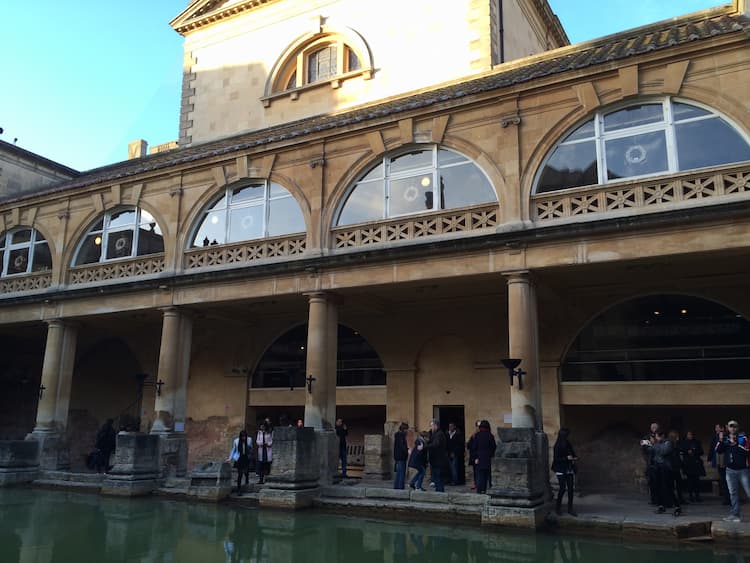
The Pleasures of Bath
Our Stonehenge trip was combined with a half-day visit to Bath, about an hour’s drive away. The whole city is a UNESCO World Heritage City, the only one in the UK, and it is easy to understand why.
With glorious scenery and splendid architecture, Bath is a pleasure to visit. Our tour started at the well preserved Roman Baths, which give the city its name.
The Romans called the city Aquae Sulis, famous as a religious spa. The incredible museum collection highlights the history through a spectacular collection of objects and walkthroughs amidst Roman courtyards, temples and sacred springs.
Later, we admired the Georgian architecture of the Royal Crescent and the Victorian Gothic style of Bath Abbey.
For the literary-minded, a stop at The Jane Austen Centre is a must, where you can step inside the world of Bath’s most famous resident. Our Bath sojourn concluded with some delicious afternoon tea and accompanying delicacies at a local tearoom.
For a much grander experience, you can indulge in a traditional afternoon tea replete with dainty sandwiches, decadent pastries and the very British scones with clotted cream and strawberry preserves at The Pump Room restaurant, a Bath mainstay for over two centuries.
Or you could enjoy the sumptuous tea spread at the Regency Tea Room located inside Jane Austen Centre.
See all the best English sites, including Bath, on this top-rated guided tour here.

The Grandeur of Windsor Castle
Many tours to Stonehenge also include a trip to Windsor Castle, located in Windsor, the idyllic town that has been home to British royalty for centuries. With over 1000 lavish rooms, Windsor Castle is well known as the largest and longest-occupied royal castle in the world.
The mighty stone fortress was founded by William the Conqueror in the 11th century and today it serves as a Royal residence for the Queen of England. Visitors like to look out for the Royal flag flying from the castle’s Round Tower as it signifies the Queen in residence.
Covid-19 protocols are followed at all sites and tickets must be booked in advance for visits. Current information can be found at all websites.
Find skip-the-line tickets to Windsor Castle and book ahead here.
Read our articles about other destinations here:
Author Bio: Susmita Sengupta, an architect by background from New York City, loves to travel with her family. Her articles are published in many online travel magazines including at Go World Travel.
- Top 10 Things to Do in Ireland - April 25, 2024
- How to Get Around in Sydney: A Local’s Guide to Traveling Around Sydney - April 24, 2024
- The Low-Key Magic of Ghent, Belgium - April 22, 2024


I enjoy learning about and exploring ancient artifacts and relics. Is a good spot to go think by yourself. I appreciate you taking the time to explain that.
I enjoy learning about and exploring ancient artifacts and relics. Is a good spot to go think by yourself. I appreciate you taking the time to explain that.
What a nice destination. It is beautiful like bob the robber
An attractive destination. I like antiquity and its historical traces. Is a suitable place to go alone and ponder. Thank for your sharing.
Thank you for your comment!